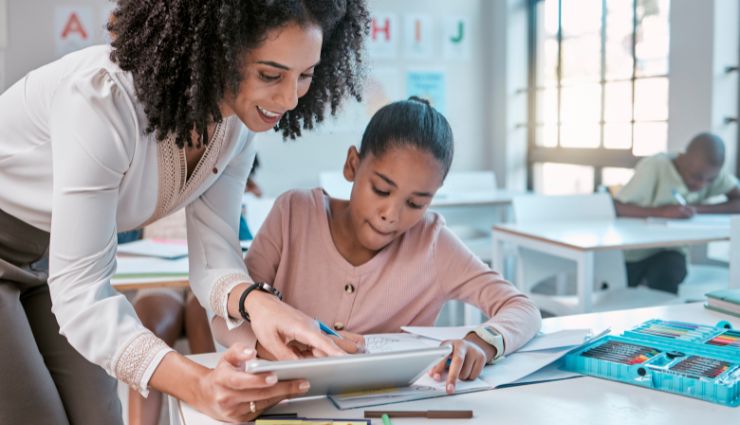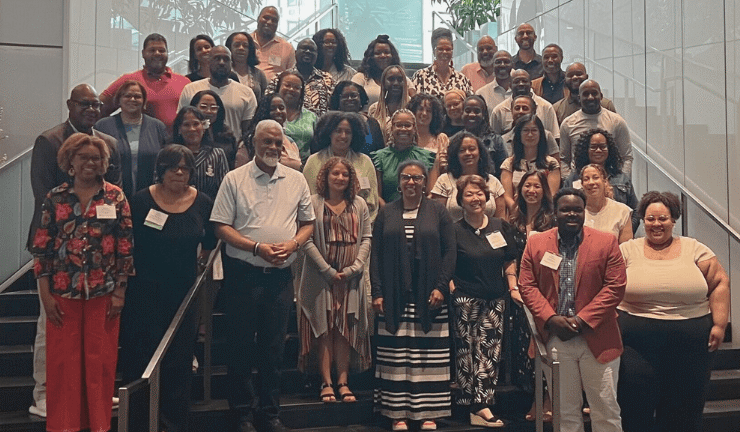The Case for Hope Leadership

In our consulting work with heads of school over the past year, we couldn’t help but notice how exhausted so many heads have felt. As former school leaders ourselves, we know the challenges of leading a school under the best of circumstances. Add a long, complex, and still evolving period of crisis management and it makes perfect sense that exhaustion would set in. Our hearts go out to all school leaders. It’s hard to please anyone in such a climate, and tough choices have only gotten tougher.
But we want to do more than just sympathize. In our consulting work, our goal is to help school leaders grow personally, professionally, and strategically. During these trying times, the path forward, of course, varies per head and school. But in all cases, it’s essential that school leaders — heads in particular — believe in the value of their work and their ability to carry it out. It’s essential, in short, to have hope.
Because we fear that some heads are losing sight of hope under the pressures placed upon them, we want to remind them here of just how remarkable they and their schools have been these past two years. It’s important to acknowledge this. The heads we know best have done astounding work under the most challenging circumstances. As a result, their schools are now well positioned to emerge from this pandemic stronger than ever and with greater clarity of mission and purpose.
A New Era of Independent Education Begins
Let’s start with the obvious. Our schools have made it through what is likely to be the most difficult year they’ll ever face. In the process, we have learned a great deal about our resiliency and adaptability, our creativity and nimbleness. We have come to see our value to students and their families in a time of enormous difficulty. We learned how to conduct remote classes well, and where there were in-person classes, how to conduct them safely. Indeed, given the low student-teacher ratio and quality of our programs, many independent schools found themselves attracting larger number of applicants for this fall. Parents are clearly confident in our “value proposition” — our ability to offer a high-quality program (in-person or virtual) in which no student gets lost in the mix.
Although it’s clear that in-person is preferable to distance learning for most students, our forced experimentation in distance learning has no doubt permanently shaken up the notion that all learning must take place in the classroom. We have learned that we can rethink the use of time and space. We’ve learned that we can give students more agency and create greater programmatic flexibility and in doing so strengthen and broaden our curricula. We’re engaging in more thematic and cross-disciplinary learning. We are offering students the opportunity to dive deeper into areas of personal interest. We’re worrying less about testing and more about the demonstration of knowledge. We are redesigning our programs to balance academic content with skill building and to give more weight to matters of health and wellness. This kind of “structured agency,” as NAIS’s Tim Fish puts it, is driving programmatic shifts like we’ve never seen before. No doubt schools will keep the flywheel of such innovation going as we reshape our sense of what excellent schools are and can be.
The past year has also forced us to face with greater attention and moral clarity the question of what each of our schools means by diversity equity, inclusion, and justice. Without question, we are all engaged in heightened conversations on what we have done well, where we’ve fallen short, and what policies and practices and curricular changes we need to establish in order to be highly effective schools dedicated to diversity and antiracism. We’re seeing some impressive game-changing results, too. The #MeToo movement, as well, has driven important conversations on gender equity that are reshaping school programs and communities for the better.
For school leaders, it’s essential to prioritize short-term planning when in crisis management. But from where we stand, this is a good time now to step back, acknowledge what you and your community have been able to achieve, and begin shaping new educational pathways forward — refining our new thinking on how we “deliver” education, engaging in conversations with our faculty on where our schools can go, and otherwise establishing principles and practices that enable our schools to strengthen and leverage our missions. As leaders, you can create the process of defining now what it means to thrive as a school and engage in the collective good thinking that will both energize the faculty and staff and lead schools to new levels of excellence.
This is what we mean when we talk about hope leadership.
Designing the Future
The process of designing our schools for a better future involves two key steps. The first is a matter of attending to the essential processes in our schools. We know it sounds counterintuitive, but it’s hard for schools to think about the future when they are struggling to function in the present. To be truly innovative, schools need to attend to all the core practices.
For heads, this work involves creating strong board relations. It requires that they work with their leadership teams to be highly attentive to the school’s financial health, enrollment management, and the recruitment and retention of excellent teachers. Centering programmatic excellence also means centering health and wellness as well as diversity, equity, and inclusion. And all of it depends on excellent communication with all constituents.
The second step is to ensure your school sees itself as a school of the future.
Psychologist Rob Evans likes to say our schools are backward-looking institutions. We are good at looking at where we have been as a way to determine where we are going. But the present challenges also offer leaders an opportunity to project out into the future and imagine what kind of schools we want to be.
There are a number of ways to approach this. Tim Fish, NAIS’s innovation director, asks us to “design action.” While addressing current needs, in other words, we need to plan and support innovation as part of our practice and our journeys as schools. COVID-19 has forced us to be schools on the move. What good leaders can do now is take charge of the moving process, as a way to strengthen their missions by design.
This new kind of thinking was highlighted in a recent New View Edu podcast with philosopher Roman Kzrnaric, who talked about his book, “The Good Ancestor, “and the Future Design movement in Japan — and how both can help schools plan for a better future. Borrowing the concept of being a good ancestor from geneticist Jonas Salk, Krznaric encourages a mind-shift that asks us to see ourselves through the eyes of future generations. Will they look back on us as good ancestors? Much of the behavior in contemporary society would suggest that we’re off track. But when we project out into the future, say 50 years hence, and imagine what steps our generation of leaders could take today to ensure a heathy society in the decades to come, we can gain greater clarity about what our schools need to focus on — and how we should function as leaders today. What can I do today, asks Roman Kzrnaric, to be considered a good ancestor in the future? As rule of thumb, he notes, “a good leader is one who is thinking seven generations ahead.”
This kind of projecting out, we believe, is a matter of deep hope. It can give us greater clarity about our mission and purpose, give direction to each day, and help us guide our communities to work together to shape the kind of programs that serve our schools and the world in the best possible ways.
Finding Hope in Opportunity
It helps, we think, for heads to remember that feelings of worry, doubt, and uncertainty brought on by disruptive change is natural and inevitable. It represents a classic stage in human dynamics. Leaders would be wise to acknowledge the uncertainty and anxiety they (and others) are feeling. But it’s also important to see this moment in history as an opportunity for deeper conversations in schools.
Our goal here isn’t to be prescriptive. We mostly want heads to take time now to see what they’ve achieved this past year and to set aside time over the coming school year to begin the process of taking what we’ve learned and moving our schools forward, confident in what we can achieve. Here in lies hope. Even as we address the current challenges and pressures, we can also lead the process of discovery and innovation, find new potentials in our programs, and start evolving our schools so they remain deeply mission aligned and highly effective in preparing children for the world they will someday lead.
Ann Teaff and Karen Neitzel are consultants within our Leadership Coaching Practice. They support heads of school, key administrators, and boards of trustees in personal, professional, and strategic growth.








